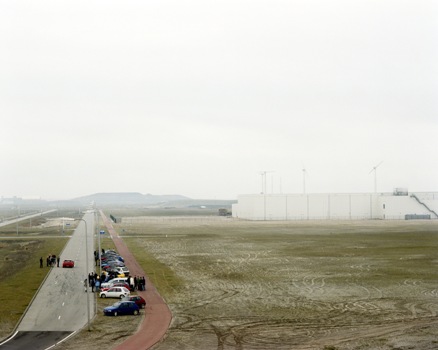MAC, Museo de Arte Contemporáneo ,
Jun 11, 2009 - Aug 09, 2009
Santiago de Chile, Chile
Post-It City: Occasional City
by Cristián Gómez Moya
Although the city is the root issue behind the exhibition, it is not defined in urbanistic terms, but rather by the ways of practicing an economy of habitability in the public sphere, on the margins that determine exclusion to a place and the right to use it. In this sense it can be said that the city is not self-regulating. The curator’s and artists’ focus is therefore on examining city spaces for temporary occupation by documenting everyday practices and ethnovisual registers that reflect the scope of power of informal transactions, creative appropriations, the design of exchanges, parasite economies, the appreciation of differences, and the politics of waste and marginalization among many others. These interests are taken up in the effort to distance themselves from the more usual topics of urban remodeling, gentrification, “ghettoization”, civic planning, etc.
As a device for (pseudo) research that questions official statistics through case studies of cities throughout the globe (among them Sao Paulo, Mühlviertel, Allahabad, Málaga, Taipei, Belo Horizonte, Manhattan - a list that includes 80 cities), the project’s strategies are a way of highlighting both micro as well as macro urban policies and the space for social relations that make the survival of immigrants possible, resources in peripheral areas available, or offer creative solutions within densely populated buildings. Numerous other issues are observed and disseminated by the research groups while bearing in mind the contradictions between taking on a city par excellence and producing a subjective practice capable of subverting spaces for control.
In keeping with the overlay of ideas involved in this kind of research, we should mention the historical and epistemic genealogy of Post-it City. Following to some extent the matrix that prevails among theorists and intellectuals engaged in the tropos of everyday life, such as de Certeau, and offshoots of the neo-Marxist Henri Lefebvre’s thoughts on social spaces, the thrust of Ciudades Ocasionales is to point out different ways of thinking and doing regarding interventions in the day-to-day use of spaces in all its magnitude and strangeness. Hence the significance of the declaration of political principles on which one the main instigators of the project, Giovanni La Varra, bases his work. His references are the actions and techniques of the Situationist International (1957), as promoted by Pinot-Gallitzio, Verrone and Debord, among others, as a prelude to the ideological disruption that took place in May ’68 in central Europe, and its links to no less dominant Western avant-garde movements.
Using that decisive axis as the starting-point for conducting a counter-interpretative program of cities around the globe says a lot, but not enough to grasp the meaning behind cases as dissimilar as the Kumbh Mela pilgrimage in India, rental housing on the outskirts of Santiago de Chile, the Day of the Dead ceremonies in the cemeteries of La Paz, Bolivia, the famous Burning Man event in the Nevada desert, or the occupations carried out in the Riachuelo-Matanzas basin in Buenos Aires; nor does it justify a reflective proposal on the city in its own cultural context. We could suppose that, to avoid a cultural spectacle, it would seem good practice to privilege an aesthetic of micro-politics and globalized metaphors in the occupation of everyday spaces. Here the use of the “post-it” brand logo - those little slips of self-adhesive paper that leave no mark - that points out places and acts as a mnemonic aid for sundry ideas is no coincidence. Nevertheless, in conducting a critical investigation on the details of survival tactics in Asian or Latin American peripheries and large megalopolises, it does not seem to be sufficient to start with the urban-occupation experiments inherited from the Situationists in central Europe, much less to approach the subject through corporatized globalism.
The project exposes deep-seated uncertainties and concerns as regards to both marginalized areas and temporary occupations of public spaces, which have already been pointed out in the fields of ethnography and urban sociology. This would also work by studying the strategies of large neo-liberal corporations, which as the urban sociologist Saskia Sassen says would be “capable of turning economic values liquid”, i.e., are occasionally diluted in the laws governing the speculative real-estate market, for example, without leaving traces of their stealthy course.
|









